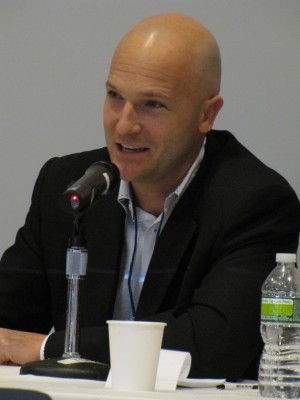Middle-school principal Anthony Orsini of Ridgewood, N.J., made national headlines last year when he urged parents to keep their young adolescents off Facebook — at least until high school.
The slings and arrows of social-media stings by peers — also known as cyberbullying — were far more common than any from adult predators, Orsini said, calling threats from the latter “insignificant compared to the damage that children at this age constantly and repeatedly do to one another through social-networking sites, through text- or picture-messaging.’’
In the leafy, upscale suburb of Ridgewood, Orsini witnessed pain caused by gossipy online barbs. So he took a stand against the use of social media — one that landed him on television and as a subject in a lengthy New York Times piece last spring.
Orsini discussed the reasons behind his cautionary views last week at a seminar in New York City on digital media, children’s learning and schools, sponsored by the MacArthur Foundation and hosted by the Hechinger Institute on Education and the Media.
In a fascinating contrast, Eric Sheninger, a New Jersey principal known around his school as “Mr. Twitter,’’ spoke of why social and digital media can be powerful learning tools for the plugged-in generation, and described ways he incorporates them into daily life and learning at New Milford High School. He does so, among other ways, through the school’s Facebook page and Twitter account, as well as his blog, “A Principal’s Reflections.”
“It’s been so powerful in my little district,’’ he said.
While there’s a significant difference in the ages and maturity levels of most middle- and high-school students, the contrasts between the two earnest, well-spoken principals and their educational philosophies were highlighted by the brave new world of digital learning, and the different ways that educators are reacting to it.
Sheninger’s embrace of social media was a big turnaround for a principal who had once banned cell phones. He was skeptical at first whether any of the new digital tools that so many students use at home could be educational.
“Prior to 2009, I felt social media had no place in schools and [were] a distraction to students,’’ Sheninger said during his presentation. He worried, but then he decided to join Twitter after hearing it could be an effective communications tool.
“It was at that moment that I learned of my ignorance and how my students were suffering because we would unplug [them],’’ he said. Sheninger soon realized how odd it is to take away the very technology and tools that engage students outside of school the minute they step on campus. He decided instead to teach students how to be “digitally responsible,’’ and he embraced technology as a learning tool.
“The entire focus can’t be about increasing scores,’’ Sheninger said. “How can we expect gains in student achievement if students are disengaged? What we are doing now [by embracing technology, allowing students to bring and use cell phones in school, and encouraging positive uses of social media] is about student engagement.”
Orsini’s social media views are based on the very real pain he has heard expressed by parents and students who have been victims of online attacks, via texting and Facebook. He’s also concerned about increasing expressions of suicidal thoughts by young teenagers.
“What we see … is real damage,’’ Orsini said. “The amount of angst among young people has definitely increased.”
Orsini said he’s not sure his words and message have actually lessened his students’ use of Facebook. He is certain of one thing, though: “It started a discussion,’’ he said.





